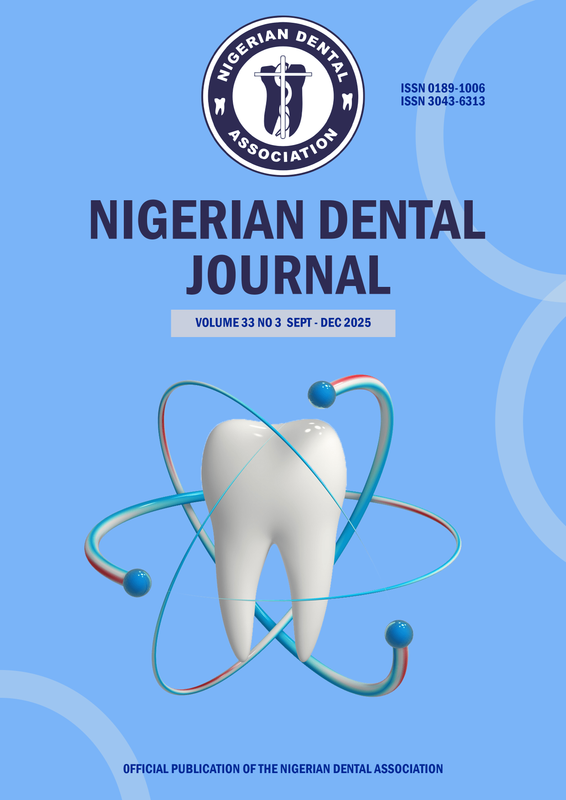Dental Phobia and Its Impact on the Quality of Life of a Ghanaian Adult Population
DOI:
https://doi.org/10.61172/ndj.v29i1.72Keywords:
Dental Phobia, Anxiety, Quality of Health, Oral Health, GhanaAbstract
Aim: Dental phobia is a significant cause of avoidance of dental treatment, which could result in poor oral health. This study sought to determine the prevalence of dental phobia among a Ghanaian adult population and how this affects their quality of life.
Materials and Methods: The study was a cross-sectional survey conducted among 329 patients attending the University of Ghana Dental School Clinic. Dental phobia was assessed with the Kleinknecht's Dental Fear Survey (DFS),
and Quality of Life measured with the Oral Health Impact Profile (OHIP). Data were analyzed using Stata 14 software and MS Excel. Descriptive statistics and measures of association between DFS and OHIP were done.
Results: About 46% of the study population had some level of dental phobia, with 8% having a high level of fear. More males (54.2%) were found to have experienced dental phobia than females (45.8%). Common causes of dental phobia were injection (54.7%), x-ray (24.9%), the dental clinic environment (13.4%), and the sound and feel of the handpiece (0.9%).
Conclusion: Dental phobia was common among the dental clinic attendants. While further research is required in the subject area, clinicians and stakeholders should not under-estimate its prevalence and potential effects.
Downloads
Downloads
Published
Issue
Section
License
Copyright (c) 2021 A.D. Dai-Kosi, N.A. Opoku-Ansah, P.K. Blankson, D. Tormeti, J. Sackeyfio, V.A. Acquaye, F. Kwamin

This work is licensed under a Creative Commons Attribution 4.0 International License.
Open Access Statement
- We became fully Open Access since January 2023.
- Our new and archived materials are available free of charge on open basis and under a Creative Commons license as stated below.
Copyright statement
Copyright © 1999 The authors. This work, Nigerian Dental Journal by Nigerian Dental Association is licensed under Creative Commons Attribution 4.0 International License.

